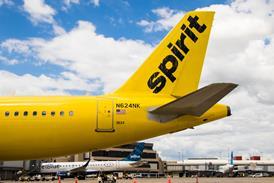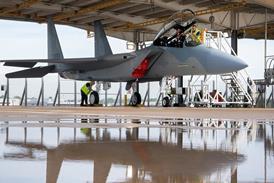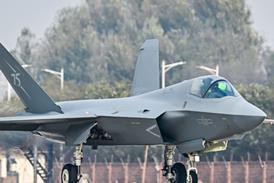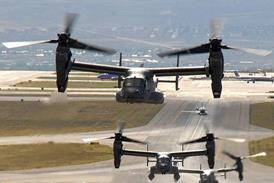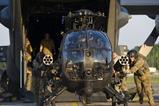Following a tumultuous multi-year period of safety incidents and groundings, the US Marine Corps (USMC) is now developing mechanical improvements for its fleet of Bell-Boeing MV-22 tiltrotors to address the cause of the in-flight mishaps.
In a new aviation strategy document released on 3 February, the service says it is pursuing multiple changes to the Osprey’s proprotor gearbox (PRGB) to “enhance aircraft safety and improve component reliability and durability”.
These include adding sensors to detect potentially catastrophic metal chip fragments entering the engine, and the use of more-durable materials in the component manufacturing process.
Issues with the PRGB have been blamed for the fatal crash of a US Air Force (USAF) CV-22 in late 2023 that killed eight personnel off the coast of Japan. That tiltrotor experienced engine failure as a result of chip fragments generated by metallurgical weakness in the left-side proprotor gearbox.
A similar issue almost brought down another air force CV-22 last November over the US state of New Mexico, in what the Pentagon described as a “near-crash”.
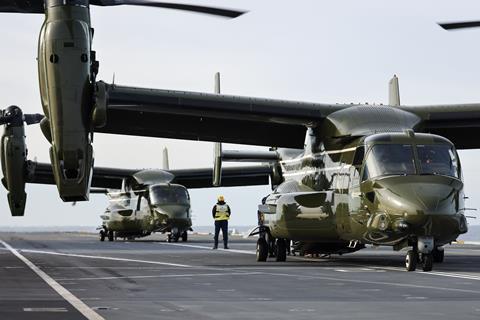
The Marine Corps has experienced its own fatal incidents with the Osprey, including a 2022 crash in Norway that killed four marines and a another crash in Southern California that killed five.
Although temporary flight restrictions and new emergency procedures have been instituted – including changes that may have averted disaster in the New Mexico incident – the USMC is now seeking a more-permanent solution.
Under an initiative dubbed Osprey Drive System Safety and Health Instrumentation (ODSSHI), the Marine Corps will install vibration sensors in each Osprey’s PRGBs and along drive trains. These will help maintenance personnel better predict the failure of critical components and swap them out in advance.
Suppliers will also use a more-durable triple-melt steel to manufacture internal components of each PRGB. This will “drastically reduce the likelihood of material defects in critical gears and bearings”, the USMC says.
In December, the Pentagon ordered PRGB inspections for its entire fleet of more than 400 Ospreys, intending to identify aircraft with the manufacturing defect.
The USMC’s 348 examples comprise the vast majority of the global Osprey fleet, with the USAF operating 54 special operations CV-22s and the US Navy still expanding toward its fleet target of 44 the CMV-22Bs for use in carrier resupply.
The Japan Ground Self-Defense Force also operates 17 of the MV-22 variant.
In addition to the metal-chip fragmentation issue, the USMC V-22 overhaul programme seeks to address a separate mechanical issue known as hard-clutch engagement (HCE), which has been responsible for multiple Osprey groundings and safety mishaps in recent years.
The issue occurs when the Osprey’s clutch unexpectedly releases from the rotor system and suddenly re-engages, according to the Pentagon’s V-22 joint programme office. The hard engagement sends an impulse through the tiltrotor’s drive train, which can potentially damage that critical system.
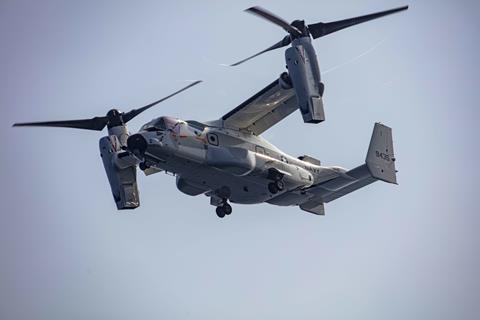
Similarly to the PRGB issue, previous V-22 groundings over hard-clutch engagement have been lifted without identifying a mechanical solution to the problem.
That issue has subsequently been connected to a gearbox subcomponent called the input quill assembly (IQA), which the USMC says will also be redesigned under the V-22 overhaul effort.
“A redesigned input quill assembly will reduce the incidence of the wear-out mode observed in previous IQA failures that led to aircraft hard-clutch engagement occurrences,” the service says.
The ODSSHI programme is the Marine Corps’ top spending priority when it comes to the Osprey fleet, under a new aviation strategy dubbed Project Eagle. Other projects include a cockpit technology refresh, flight computer redesign and targeted reliability improvements to the V-22’s engine nacelles.
The USMC plans to separately develop a long-term modernisation plan for the tiltrotor called Renewed V-22 Aircraft Modernization Plan, or ReVAMP. Targeted for testing and fielding in the 2040s, that still-to-be-determined set of upgrades will “ensure platform relevance until the end of its service life”, the USMC says.
A separate strategy document from the V-22 procurement office indicates ReVAMP will include equipping aircraft with improved drive trains and nacelles, plus development of an entirely new engine or a re-core of the existing Rolls-Royce Liberty AE1107C powerplants.
These improvements are intended to keep Ospreys in service until their eventual replacement by a successor known as the Next Generation Assault Support aircraft.
Despite the number of attention grabbing safety incidents, the USMC maintains the Osprey is no more dangerous than other categories of military aircraft.
”The MV-22 maintains mishap rates on par with other marine aviation assets,” the service says.
Between 2014 and 2024, the tiltrotor logged a Class A mishap rate of 3.15 incidents per every 100,000 flight hours – lower four other USMC aviation platforms. The service’s aviation fleet as a whole saw a Class A mishap rate of 3.24 during the 10-year period.
That is still substantially higher than the US Army’s fiscal year 2024 mishap rate of 1.9 per 100,000 flight hours – noted for being abnormally high. In FY2022 the army’s serious mishap rate was just 0.5.
The DoD categorises safety incidents – which it calls mishaps – into classes from A to E, depending on severity. The most serious – Class A – are those resulting in fatalities or disabilities, damage exceeding $2.5 million or destruction of a military aircraft, according to the US military



